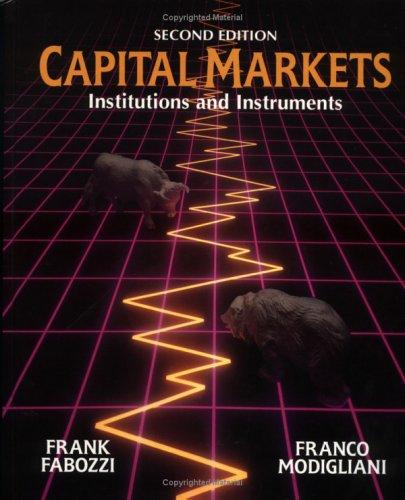27) The screenshot below shows various financial metrics, as well as ROE, ROA, and ROIC for Wal-Mart, Amazon, and Salesforce over three years:
Which of the following conclusions might you draw from this analysis and the fact that Amazon and Salesforce are valued at significantly higher multiples than Wal-Mart? (Choice of answers listed in screenshot)

Wal-Mart - Key Metrics and Ratios: s 421,395 $ Financial Information: Annual Revenue: % Growth: Annual COGS: % Revenue: Annual Net Income: Revenue: Annual Net Interest Expense: Year 1 446,509 $ 6.0% 334,993 75.0% 16,387 3.7% 2,159 Year 2 468,651 $ 5.0% 352 297 75.2% 17,756 3.8% 2,063 Year 3 476,294 1.6% 358,069 75.2% 16,695 3.5% 2,216 EBIT: EBITDA: 26,491 34,597 27,725 36,203 26,872 35,742 Free Cash Flow (FCF): $ 10,745 $ 12,693 $ 10,142 EBIT Margin: EBITDA Margin: FCF Margin: 5.9% 7.7% 2.4% 5.9% 7.7% 2.7% 5.6% 7.5% 2.1% Amazon and Salesforce are clearly overvalued, because they are trading at higher multiples but have lower ROE, ROA, and ROIC figures than Wal-Mart. Net Operating Profit After Taxes (NOPAT) 18,014 18,853 18,273 Return on Equity (ROE): Return on Assets (ROA): Return on Invested Capital (ROIC): Amazon-Key Metrics and Ratios: 23.4% 8.8% 14.4% 24.1% 9.0% 14.2% 21.9% 8.2% 13.3% While the returns-based metrics are higher for Wal-Mart, you can't directly compare these companies because Amazon and Salesforce are growing far more quickly than Wal-Mart and are in different industries. S 34,204 Financial Information: Annual Revenue: % Growth: Annual COGS: % Revenue: Annual Net Income: % Revenue: Annual Net Interest Expense: Year 1 48,077 $ 40.6% 37,288 77.6% 631 1.3% Year 2 61,093 S 27.1% 45,971 75.2% (39) (0.1%) 52 Year 3 74,452 21.9% 54,181 72.8% 274 0.4% 103 On average, equity investors in Wal-Mart can expect to earn $0.20 to $0.25, after taxes, for each $1.00 invested in the company. 4 EBIT: EBITDA: 862 1.945 676 2,835 745 3,998 Free Cash Flow (FCF): $ 2,092 $ 395 $ 2,031 Amazon is attempting to optimize its ROIC rather than its ROE or ROA, as it knows investors will pay more attention to ROIC for a high-growth company. Salesforce is likely to generate the LEAST amount of stock price appreciation over the next two years because its ROE, ROA, and ROIC are substantially lower than the figures for Wal-Mart or Amazon. EBIT Margin: EBITDA Margin: FCF Margin: 1.8% 4.0% 4.4% 1.1% 4.6% 0.6% 1.0% 5.4% 2.79 Net Operating Profit Alter Taxes (NOPAT): 586 460 507 Return on Equity (ROE): Retum on Assets (ROA): Return on invested Capital (ROIC): Salesforce - Key Metrics and Ratios: 8.6% 2.9% 7.0% (0.5%) (0.1%) 4.3% 3.1% 0.8% 3.8% S 1,657 $ Financial Information: Annual Revenue: % Growth: Annual COGS + Opex: % Revenue: Annual Net Income: % Revenue: Annual Net Interest Expense: Year 1 2,267 $ 36.8% 2,302 101.5% (12) (0.596) (6) Year 2 3,050 $ 34.6% 3,161 103.6% (270) (8.9%) 11 Year 3 4,071 33.5% 4,357 107.0% (232) (5.7%) 67 EBIT: EBITDA (35) 240 (111) 285 (286) 328 Free Cash Flow (FCF): $ 440 $ 561 $ 576 EBIT Margin: EBITDA Margin: FCF Margin: (1.5%) 10.6% 19.4% (3.6%) 9.3% 18.4% (7.0%) 8.0% 14.2% Net Operating Profit After Taxes (NOPAT): (23) (72) (186) Return on Equity (ROE): Return on Assets (ROA): Return on invested Capital (ROIC): (0.8%) (0.3%) (1.2%) (13.9%) (5.6%) (2.8%) (8.796) (3.2%) (4.4%)







